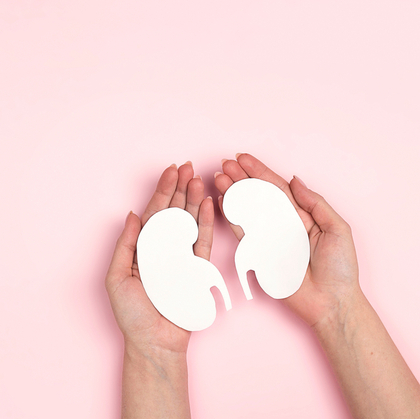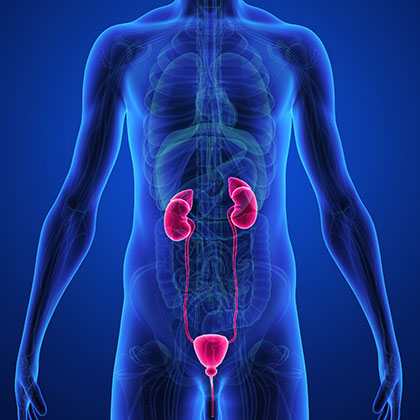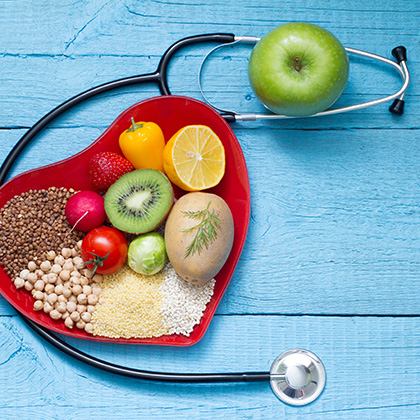Not that long ago, gout was associated with elderly well-to-do men who ate too much rich food and drank too much port. Today, however, the number of cases are soaring, with between one and two in every 100 people thought to be affected in the UK (i). One study suggests the number of people affected by gout has increased by 64 per cent since 1997 (ii). A type of inflammatory arthritis, gout is about four times more common in men than in women (iii). You’re also more likely to develop it when you’re older, – according to the NHS, symptoms usually develop after the age of 30 in men and after the menopause in women.
What are the symptoms?
Gout affects one or more of your joints, causing pain, redness and swelling (inflammation). The affected joint becomes very tender, and you may not be able to bear even touching it. Then as the inflammation starts to ease, you may notice the skin over the affected joint becomes itchy and flaky.
The most common joint that’s affected is that of the big toe (it’s thought that 70 per cent of people with gout experience their first attack in the big toe joint (iv)). As well as the big toe, it tends to affect joints at the ends of your arms and legs, such as the fingers, wrists, elbows, ankles, joints in the middle of the feet and knees. It rarely affects other joints near the centre of the body, such as the spine, shoulders and hips.
If you’re really unlucky, you could have gout in more than one joint at the same time (this is known as polyarticular gout). Indeed, the pain of gout can be so severe, it’s often compared to the pain of childbirth.
Pattern of attacks
Gout usually comes in an attack that can develop fairly quickly, during just a few hours. After an attack starts, it can last for anything from three to 10 days. You may have just one attack of gout in your lifetime, or you could have an attack every few weeks, months or years.
Certain things are thought to trigger a gout attack, including stress, illnesses that cause fever and injury (just a minor bump to a joint could bring an attack on). Dehydration can also be a gout trigger, as can having surgery, which – like some illnesses – can raise your temperature.
Gout: are you at risk?
Gout is caused by a build-up of a substance called uric acid in your body. Uric acid is a waste product made in the body and excreted by the kidneys that breaks down substances or chemicals known as purines, which are found naturally in the body and in some foods. Usually it’s harmless, but if your body makes too much uric acid – or you don’t excrete enough of it – levels can build up and become too high. This can create tiny crystals that collect in and around a joint, causing inflammation and pain in the soft lining of the joint (the synovium).
There are several things that could affect your risk of developing gout, including the following:
Genetics
Certain genes that you inherit from your parents can affect how effectively your kidneys flush uric acid from your body. According to Versus Arthritis, this is the most common causes of gout (iii). The NHS claims around one in five people with gout have a close family member who also has the condition (v).
Weight
Large bodies produce more uric acid than smaller ones, and experts believe this is why people who are overweight or obese may be more likely to develop gout than those who are of healthy weight. Discover advice on how to lose weight in our helpful guide.
Medical conditions
Some of the conditions that can increase your risk of developing gout include high blood pressure, high cholesterol, diabetes, kidney problems, psoriasis, metabolic syndrome and osteoarthritis of the feet, knees or hands.
Medicines
Drugs called diuretics – or water tablets – may increase your risk of gout, as they may affect the amount of uric acid your kidneys can excrete. Other drugs that can increase uric acid levels include some high blood pressure medicines, low-dose aspirin and a medicine used to treat high cholesterol called niacin.
Alcohol
People who drink a lot of alcohol may have a higher risk of developing gout because alcohol raises the level of uric acid in the body. One of the worst culprits is beer, which also contains significant levels of purines. Spirits also increase uric acid levels, though wine has a lesser effect. Drinking a lot of alcohol can also cause dehydration, which is a known gout trigger. Find out more about the effects of alcohol and some helpful tips on how to cut down your intake.
Gender
Men have a higher risk of developing gout than women, but women may be more likely to get gout during and after the menopause.
Gout and diet
If you have gout, there are certain lifestyle changes you can make to reduce your levels of uric acid – which may help to prevent attacks or make them less severe – including changes to your diet.
Purines
Foods that contain high levels of chemicals called purines may contribute to raised uric acid levels, so avoiding them may help reduce your risk of a gout attack. These foods include:
-
Red meat (beef, pork, lamb)
-
Offal (liver, kidneys)
-
Game (rabbit, venison, pheasant)
-
Seafood (mussels, crab, shrimps)
-
Oily fish (mackerel, sardines, pilchards, herring)
-
Foods containing yeast or meat extracts (as found in Marmite, Bovril, Vegemite, beer, stout and shop-bought gravy
According to the Gout Society, some foods that contain a moderate amount of purines should also be eaten in moderation, including poultry, mushrooms, mycoprotein, whole grains, dried peas, beans and legumes and certain vegetables such as asparagus, cauliflower and spinach (vi).
Soft sugary drinks
Experts believe that drinking just two sugar-sweetened soft drinks a day may increase your risk of developing gout (vii), and that fruit juice may also make your risk higher. However, it’s important to drink lots of water, which may prevent uric acid forming into crystals. The NHS recommends you should aim to drink at least 1.2 litres of water a day – that’s six to eight glasses (viii).
If you struggle to drink that much water, remember that non-alcoholic and non-caffeinated drinks can replace some of it, including skimmed milk and herbal teas.
Vitamin C
Foods that contain high levels of vitamin C, including many fruits and vegetables, may also help, as vitamin C is thought to encourage the kidneys to excrete uric acid (iii). Try red, yellow and green peppers, guavas, dark green leafy vegetables such as kale, kiwi fruit, broccoli, berries and citrus fruit.
Meanwhile, losing weight if you need to is also a good idea, as having a lower body weight means you produce less uric acid. But avoid high-protein diets, as these tend to contain very high levels of purines. Drastic weight-loss diets are also a bad idea because they can increase your production of uric acid.
Moderate exercise can help you to lose weight and maintain a healthy weight, and it’s also good for your joints as it keeps them moving. Swimming, for instance, is ideal because it keeps your joints moving but doesn’t put any pressure on them, since the water supports your weight.
How is gout treated?
Conventional treatments for gout are designed to do two things: prevent attacks and relieve the symptoms of an attack. Drug treatments that reduce uric acid levels are often prescribed to people when they are first diagnosed with gout to reduce the frequency of attacks and also the risk of their joints being damaged. These treatments are known as urate-lowering therapy (ULT), and include the medicines allopurinol and febuxostat. Both of these medicines – and other ULT drugs – have common side effects that you should be aware of, so it’s a good idea to discuss these with your GP or refer to the patient information leaflets in the packet.
If you have an attack, the main medicines used to reduce pain and inflammation are anti-inflammatory painkillers called non-steroidal anti-inflammatory drugs (NSAIDs), plus colchicine and corticosteroids. NSAIDs such as naproxen and diclofenac can also cause side effects, including stomach ulcers, indigestion an gastric bleeding, and you should also be prescribed medicines called proton pump inhibitors (PPIs) to reduce any such risk.
Colchicine and corticosteroids are used if you’ve tried NSAIDs but haven’t found them effective, but again there are side effects you should be aware of including nausea and diarrhoea in the case of colchicine and weight gain, bone and skin thinning in the case of corticosteroids. If you’re worried about side effects, talk to your GP.
How to help yourself
In the event of an attack, there are a few things you can do to make yourself feel more comfortable:
-
Rest as much as possible and raise the affected limb using a cushion – try not to touch or knock the joint, as it will feel very sensitive.
-
Gently apply an ice pack to the affected joint to keep it as cool as possible (you can buy cooling ice pads that you can keep in the freezer from pharmacies, or improvise by using some ice cubes or a bag of frozen peas wrapped inside a towel (never place ice directly next to your skin).
-
Apply the ice pack for no more than 20 minutes at a time. Remove, then let your skin return to its normal temperature before applying another ice pack.
-
If you have gout in part of your foot, ankle or knee, try placing a frame or cage over the affected joint when you’re in bed to stop the weight of your bedclothes causing more discomfort
Natural remedies for gout
Besides conventional treatments, there is a handful of natural nutritional products that may provide beneficial support in people who have gout.
Sour cherry
Antioxidants in sour cherries called anthocyanidins are thought to offer a range of health benefits, and nutritional advisers often recommend them for gout. Indeed, there is some evidence that they may help to lower levels of uric acid in the blood (ix). In one trial, volunteers with gout found their risk of having an attack was 35 per cent lower after taking cherry extract compared to when they didn’t take it (x).
Fish oils
The omega-3 fatty acids found in oily fish are also often recommended for gout because they are thought to affect the body’s natural production of inflammation-reducing prostaglandins (xi). It’s also worth noting that while oily fish contain high levels of purines – substances that may increase uric acid levels – these are thought to be found in the meat of the fish, and not in fish oil supplements that are highly purified and distilled (xii).
If you’re a vegetarian or vegan you can still benefit from an omega-3 supplement, thanks to the availability of products that contain the natural triglyceride (TG) form of omega-3, which is sourced from plant organisms called microalgae rather than fish oils.
Vitamin C and E
These vitamins may help by providing general antioxidant support. There’s also some interesting evidence that vitamin C may reduce uric acid levels – though the study was carried out in people who were not gout sufferers (xiii).
Quercetin
A bioflavonoid, quercetin is also thought to have antioxidant capabilities. Found in onions, black tea, grapefruit and apples, in one study it has been found to lower uric acid levels in men with raised concentrations in their blood (xiv).
PEA
Also known as palmitoylethanolamide, PEA is a type of fatty acid made naturally by the body and found in all cells, tissues and fluids including the brain (it’s also found in foods such as soya beans, peanuts, eggs, flaxseed and milk). Described as an endocannbinoid-like chemical that belongs to a family of fatty acid compounds called amides (xv), PEA is an alternative to CBD, since both substances are thought to have similar properties including the ability to reduce pain and inflammation. However researchers suggest PEA is safer than CBD, since it has been studied more extensively and has a more robust safety profile (xvi) with no known side effects (xv).
Your body naturally increases its production of PEA when your cells are damaged or threatened. But in certain situations – such as when your body is experiencing chronic inflammation – the level of PEA in your cells drops (xv). When this happens, PEA supplements may be helpful. In fact a review of 16 clinical trials and meta-analysis of PEA suggests it does have analgesic actions – in other words it helps to relieve pain (xvii).
Gout is an extremely painful condition, but this guide should help make you aware of the ways you can help yourself. Find out more about other conditions by visiting our health library.
References:
-
Available online: https://www.nhsinform.scot/illnesses-and-conditions/muscle-bone-and-joints/conditions/gout
-
Kuo. CF, Grainge. MJ, et al. Rising burden of gout in the UK but continuing suboptimal management: a nationwide population study. Ann Rheum Dis 2014doi:10.1136/annrheumdis-2013-204463. Available online: https://ard.bmj.com/content/74/4/661
-
Available online: https://www.versusarthritis.org/about-arthritis/conditions/gout
-
Available online: https://www.theguardian.com/society/2004/jan/18/medicineandhealth.lifeandhealth
-
Available online: https://www.nhsinform.scot/illnesses-and-conditions/muscle-bone-and-joints/conditions/gout#causes-of-gout
-
Available online: http://www.ukgoutsociety.org/PDFs/goutsociety-allaboutgoutanddiet-0917.pdf
-
Underwood M. et al., Sugary drinks, fruit, and increased risk of gout. BMJ. 2008 Feb 9;336(7639):285-286. Available online: https://www.ncbi.nlm.nih.gov/pmc/articles/PMC2234537/
-
Available online: https://www.nhs.uk/news/food-and-diet/six-to-eight-glasses-of-water-still-best/
-
Jacob. RA, Spinozzi. GM, Simon. VA, et al. Consumption of cherries lowers plasma urate in healthy women. J Nutr. 2003;133:1826-9. Available online: https://pubmed.ncbi.nlm.nih.gov/12771324-consumption-of-cherries-lowers-plasma-urate-in-healthy-women/
-
Zhang. Y, Neogi. T, et al. Cherry consumption and decreased risk of recurrent gout attacks. Arthritis Rheum. 2012;64(12):4004-4011. Available online: https://pubmed.ncbi.nlm.nih.gov/23023818-cherry-consumption-and-decreased-risk-of-recurrent-gout-attacks/
-
Available online: https://www.eurekalert.org/pub_releases/2006-04/foas-aeo040306.php
-
Available online: https://www.arthritis.org/health-wellness/treatment/complementary-therapies/supplements-and-vitamins/are-fish-oil-supplements-safe-with-gout
-
Huang. HY, Appel. LJ, Choi. MJ, et al. The effects of vitamin C supplementation on serum concentrations of uric acid: results of a randomized controlled trial. Arthritis Rheum. 2005;52(6):1843-1847. Available online: https://pubmed.ncbi.nlm.nih.gov/15934094-the-effects-of-vitamin-c-supplementation-on-serum-concentrations-of-uric-acid-results-of-a-randomized-controlled-trial/
-
Shi. Y., Williamson G., Quercetin Lowers Plasma Uric Acid in Pre-Hyperuricaemic Males: A Randomised, Double-Blinded, Placebo-Controlled, Cross-Over Trial. Br J Nutr.;115(5):1. Available online: https://pubmed.ncbi.nlm.nih.gov/26785820-quercetin-lowers-plasma-uric-acid-in-pre-hyperuricaemic-males-a-randomised-double-blinded-placebo-controlled-cross-over-trial/?from_term=quercetin+gout&from_pos=5
-
Clayton P. et al., Palmitoylethanolamide: A Natural Compound for Health Management. Int J Mol Sci. 2021 May;22(10): 5305. Available online: https://www.ncbi.nlm.nih.gov/pmc/articles/PMC8157570/
-
Clayton P. et al., Palmitoylethanolamide: A Potential Alternative to Cannabidiol. J Diet Suppl. 2021 Nov;28;1-26. Available online: https://www.tandfonline.com/doi/full/10.1080/19390211.2021.2005733
-
Gabrielsson . L, Mattsson. S, Fowler. CJ. Palmitoylethanolamide for the treatment of pain: pharmacokinetics, safety and efficacy. Br J Clin Pharmacol. 2003;110:359-362.Available online: https://www.ncbi.nlm.nih.gov/pmc/articles/PMC5094513/
Related Posts
Disclaimer: The information presented by Nature's Best is for informational purposes only. It is based on scientific studies (human, animal, or in vitro), clinical experience, or traditional usage as cited in each article. The results reported may not necessarily occur in all individuals. Self-treatment is not recommended for life-threatening conditions that require medical treatment under a doctor's care. For many of the conditions discussed, treatment with prescription or over the counter medication is also available. Consult your doctor, practitioner, and/or pharmacist for any health problem and before using any supplements or before making any changes in prescribed medications.

Christine
Christine Morgan has been a freelance health and wellbeing journalist for almost 20 years, having written for numerous publications including the Daily Mirror, S Magazine, Top Sante, Healthy, Woman & Home, Zest, Allergy, Healthy Times and Pregnancy & Birth; she has also edited several titles such as Women’ Health, Shine’s Real Health & Beauty and All About Health.
View More



